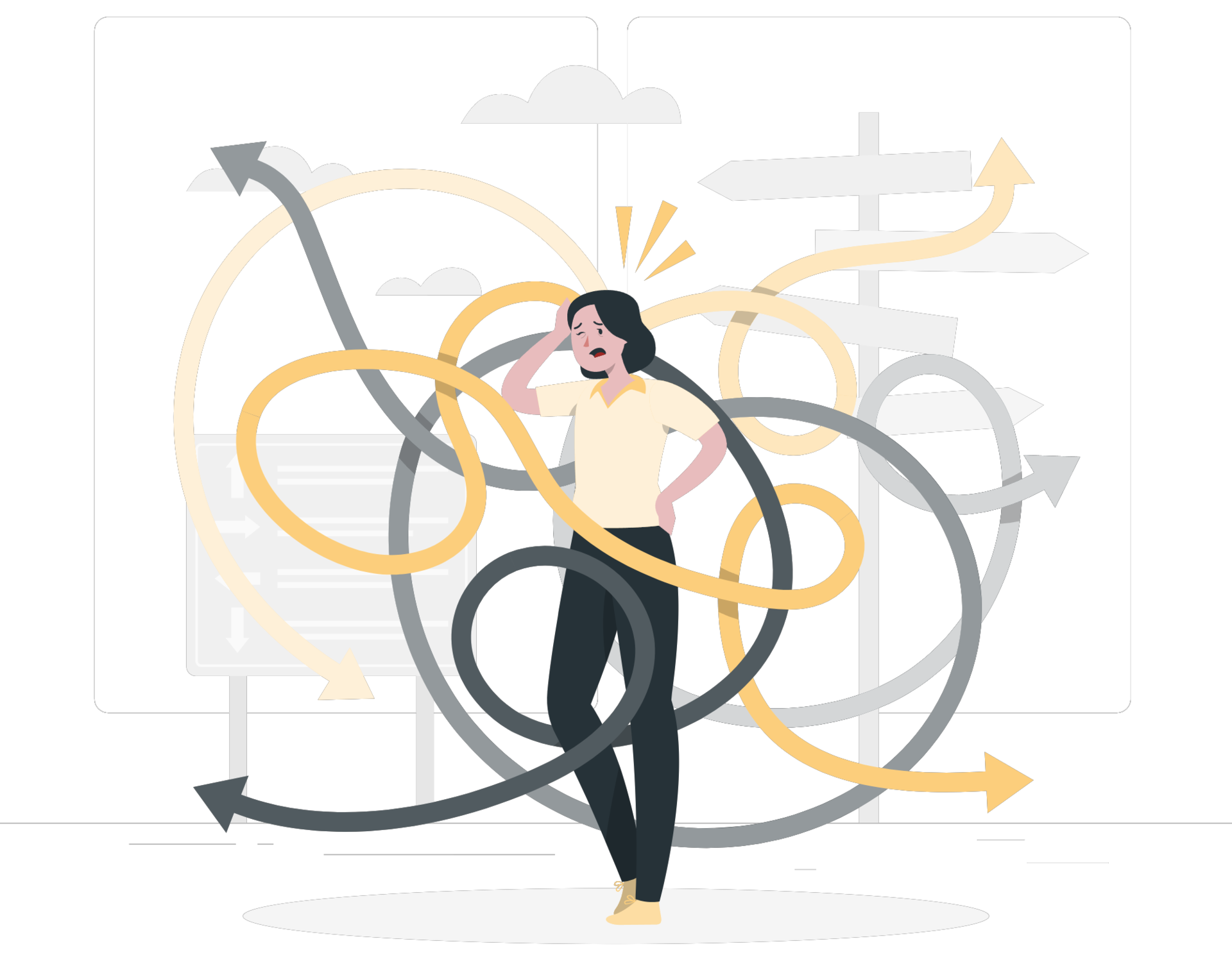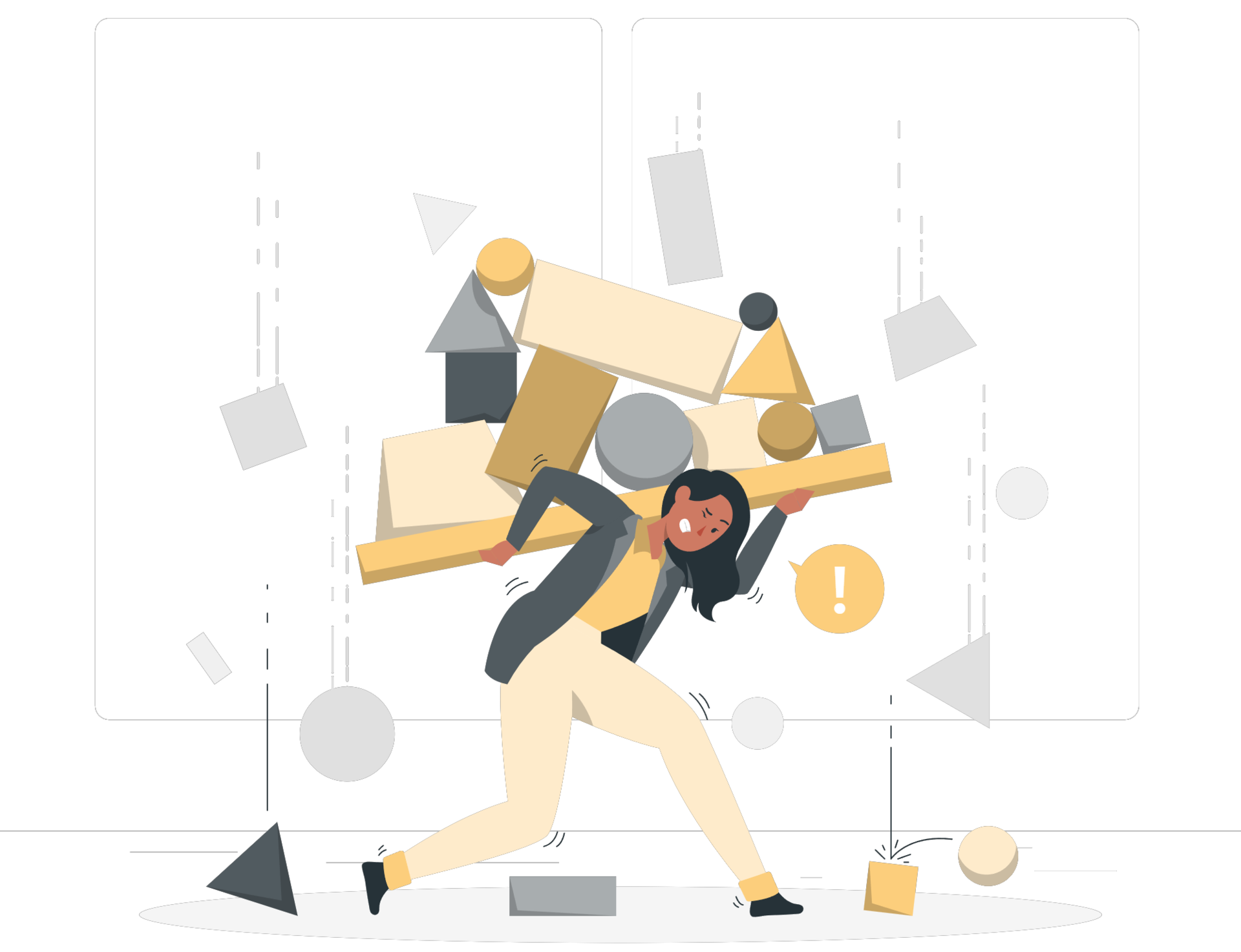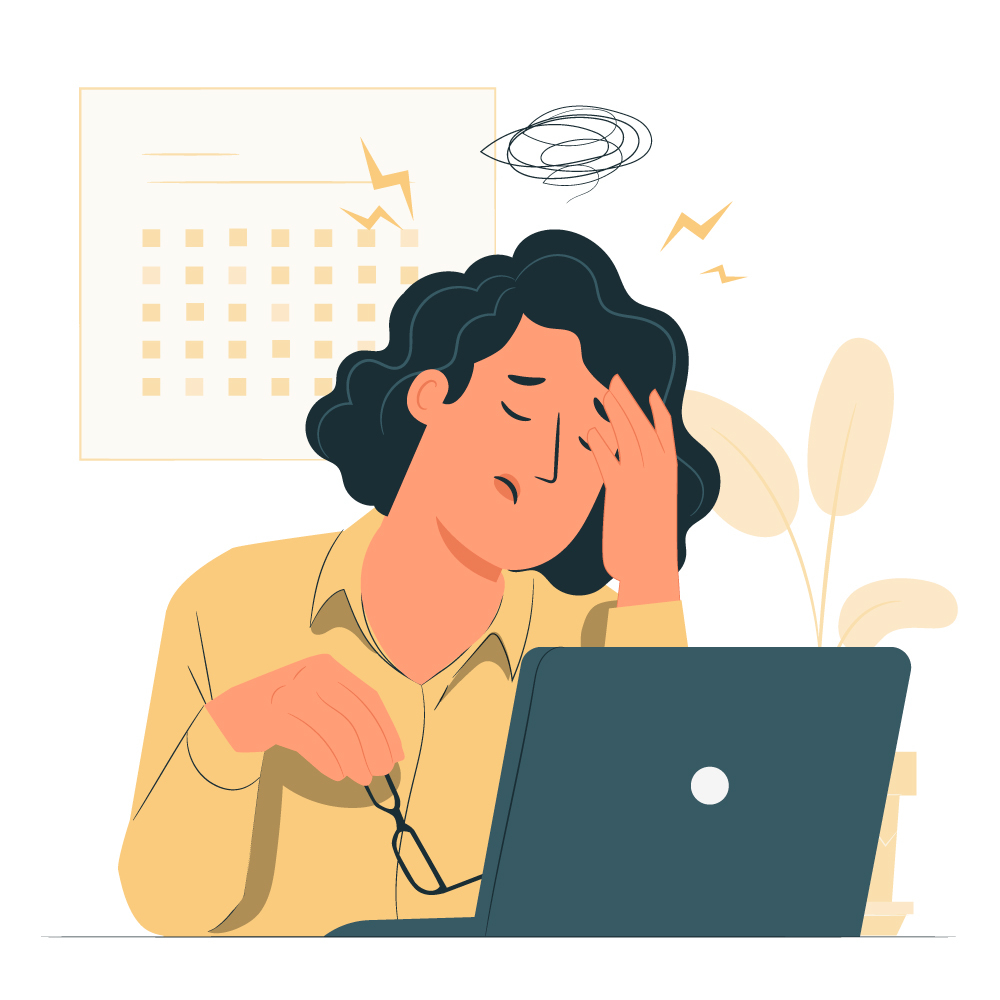Do you find yourself dreading Mondays, constantly feeling drained and unfulfilled? It’s time to uncover the hidden signs of work burnout that may be lurking in your daily life. Get ready to unravel the mystery and take control of your well-being as we dive into the world of work burnout and how spot its subtle warning signs.
Work burnout is chronic physical and emotional exhaustion caused by prolonged and overwhelming work-related stress. It is characterized by feelings of depletion, cynicism, and a reduced sense of accomplishment.
Recognizing and addressing work burnout is essential due to its significant impact on individual well-being and job performance. Neglecting burnout can lead to negative consequences, including increased stress levels, declining physical and mental health, decreased productivity, and diminished job satisfaction.
By acknowledging and taking action against work burnout, individuals can prioritize their well-being, maintain a healthy work-life balance, and foster a positive work environment conducive to productivity and fulfillment.
In this blog, we will delve into work burnout, exploring the telltale signs that indicate you may be experiencing burnout and providing insights on how to spot them. Let’s get started!
Signs of Work Burnout
A. Exhaustion and Fatigue
Exhaustion and fatigue are common signs of work burnout. Individuals experiencing burnout often feel constantly tired, even after sufficient rest. They may struggle with a persistent lack of energy throughout the day, finding it challenging to find the motivation to complete tasks and meet deadlines. This exhaustion can persist despite taking breaks or time off, indicating a more profound issue related to work burnout.
B. Decreased Productivity and Performance
Another sign of work burnout is decreased productivity and performance. Individuals may find it challenging to stay focused and motivated on their tasks, leading to decreased work productivity and efficiency. Missed deadlines and an increase in errors or mistakes can also occur due to the decreased ability to concentrate and perform at their best.
C. Emotional and Physical Symptoms
 Emotional and physical symptoms are also prevalent indicators of work burnout. Those experiencing burnout may experience mood swings, irritability, and heightened sensitivity to stressors. Physical symptoms such as headaches, stomachaches, or muscle tension can manifest due to chronic stress. Additionally, individuals may fall ill more frequently or experience a weakened immune system due to prolonged burnout.
Emotional and physical symptoms are also prevalent indicators of work burnout. Those experiencing burnout may experience mood swings, irritability, and heightened sensitivity to stressors. Physical symptoms such as headaches, stomachaches, or muscle tension can manifest due to chronic stress. Additionally, individuals may fall ill more frequently or experience a weakened immune system due to prolonged burnout.
D. Increased Cynicism and Detachment
Increased cynicism and detachment are common emotional signs of work burnout. Individuals may develop a pessimistic and cynical attitude toward their work and colleagues. They may feel emotionally detached or disconnected from their work responsibilities, finding it challenging to engage with tasks and build positive relationships with colleagues. This detachment can significantly impact job satisfaction and overall work performance.
E. Loss of Enjoyment and Motivation
Lastly, a loss of enjoyment and motivation clearly shows work burnout. Once enjoyable tasks may now feel burdensome and uninteresting. Individuals may experience a lack of motivation and enthusiasm for work-related goals and accomplishments. This loss of enjoyment and motivation can further contribute to feelings of burnout and dissatisfaction.
Recognizing these signs of work burnout is crucial for individuals to take proactive steps in addressing and preventing further negative impacts on their mental and physical well-being. It is important to prioritize self-care, seek support, and make necessary changes to restore a healthy work-life balance.
Work Burnout Risk Factors
A. High workload and excessive job demands
One of the significant risk factors for work burnout is high workload and excessive job demands. When individuals are consistently faced with heavy workloads, tight deadlines, and unrealistic expectations, they are more prone to experiencing burnout. The constant pressure to meet these demands without sufficient time and resources can lead to chronic stress and exhaustion.
B. Lack of control and autonomy
A lack of control and autonomy over one’s work can contribute to work burnout. When individuals feel micromanaged or have limited decision-making authority, it can lead to frustration, disempowerment, and a sense of being trapped in their work. The lack of control over their work processes and outcomes can erode motivation and contribute to burnout.
C. Insufficient resources and support
Insufficient resources and support can significantly increase the risk of work burnout. When individuals do not have access to the necessary tools, equipment, or training required to perform their tasks effectively, it can lead to increased stress and frustration. Additionally, a lack of support from colleagues, supervisors, or the organization can make coping with work demands and navigating challenges difficult, further contributing to burnout.
D. Poor work-life balance
 Poor work-life balance is a significant risk factor for work burnout. When individuals consistently work long hours, bring work home, or have little time for personal activities and self-care, it can lead to a chronic imbalance between work and personal life. This imbalance can result in increased stress, strain on relationships, and a lack of time for relaxation and rejuvenation, ultimately leading to burnout.
Poor work-life balance is a significant risk factor for work burnout. When individuals consistently work long hours, bring work home, or have little time for personal activities and self-care, it can lead to a chronic imbalance between work and personal life. This imbalance can result in increased stress, strain on relationships, and a lack of time for relaxation and rejuvenation, ultimately leading to burnout.
E. Job insecurity and lack of recognition
Job insecurity and a lack of recognition can also contribute to work burnout. When individuals experience fear of losing their job or work in an environment where their efforts go unnoticed or unappreciated, it can lead to feelings of anxiety, demotivation, and disengagement. The absence of job security and recognition for one’s contributions can undermine job satisfaction and contribute to burnout.
Understanding these risk factors can help individuals and organizations identify and address potential sources of work burnout. By implementing strategies to mitigate these risk factors, such as workload management, fostering autonomy, providing adequate resources and support, promoting work-life balance, and recognizing employee efforts, it is possible to create a healthier and more sustainable work environment.
The Consequences of Work Burnout
A. Personal Consequences
Work burnout can have significant personal consequences for individuals. It can lead to a decline in overall well-being, including increased stress, anxiety, and depression. Burnout can also affect personal relationships, as individuals may have less energy and emotional capacity to invest in their loved ones. Moreover, it can result in a diminished sense of personal accomplishment and satisfaction, decreasing self-esteem and overall happiness.
B. Professional Consequences
Work burnout can have detrimental effects on one’s professional life. It can lead to decreased job performance and productivity, as individuals may struggle to maintain focus and motivation. The quality of work may suffer, leading to errors, missed deadlines, and a decline in the overall output. Burnout can also negatively impact job satisfaction and career advancement opportunities, as individuals may lose interest and engagement in their work.
C. Impact on Physical and Mental Health
 One of the most significant consequences of work burnout is its impact on physical and mental health. Prolonged exposure to chronic stress and exhaustion can lead to various physical health issues such as headaches, insomnia, fatigue, and a weakened immune system. Mental health can also be significantly affected, with an increased risk of developing anxiety disorders, depression, and burnout-related symptoms, such as irritability and emotional instability.
One of the most significant consequences of work burnout is its impact on physical and mental health. Prolonged exposure to chronic stress and exhaustion can lead to various physical health issues such as headaches, insomnia, fatigue, and a weakened immune system. Mental health can also be significantly affected, with an increased risk of developing anxiety disorders, depression, and burnout-related symptoms, such as irritability and emotional instability.
D. Effects on Work Relationships and Teamwork
Work burnout can strain relationships with colleagues and negatively impact teamwork. When individuals are experiencing burnout, they may become more irritable, have difficulty communicating effectively, and withdraw from collaborative efforts. This can lead to increased conflict, reduced cooperation, and a breakdown in effective teamwork. Additionally, burnout can affect interpersonal dynamics, eroding trust and support among team members.
Understanding the consequences of work burnout is crucial for individuals and organizations to recognize the importance of addressing and preventing burnout. By taking proactive steps to promote well-being, create a supportive work environment, and prioritize work-life balance, individuals can mitigate the negative consequences of burnout and foster a healthier and more productive professional life.
Take Action ASAP!
A. Self-assessment and reflection
The first step in addressing work burnout is self-assessment and reflection. Take time to evaluate your current situation, identify the signs of burnout you’re experiencing, and acknowledge its impact on your well-being and performance. This self-awareness will help you understand the changes you need to make.
B. Seek support from colleagues and professionals
Don’t hesitate to seek support from colleagues, friends, or professionals. Share your feelings and concerns with trusted individuals who can provide guidance and empathy. Consider talking to a therapist or counselor specializing in burnout to gain additional insights and coping strategies.
C. Prioritize self-care and stress management
 Make self-care a priority in your daily routine. Engage in activities that bring you joy, relaxation, and rejuvenation. This includes exercise, meditation, leisure time in nature, hobbies, or connecting with loved ones. Implement stress management techniques such as deep breathing exercises, mindfulness, and taking regular breaks throughout the workday.
Make self-care a priority in your daily routine. Engage in activities that bring you joy, relaxation, and rejuvenation. This includes exercise, meditation, leisure time in nature, hobbies, or connecting with loved ones. Implement stress management techniques such as deep breathing exercises, mindfulness, and taking regular breaks throughout the workday.
D. Set boundaries and practice time management
Establish clear boundaries between work and personal life. Set realistic expectations for yourself and others regarding workload and availability. Practice effective time management by prioritizing tasks, delegating when possible, and avoiding over-committing. Setting boundaries helps prevent work from encroaching on your time and allows for a better work-life balance.
E. Consider changes in work environment or career
If work burnout persists despite efforts to address it, consider changing your work environment or even exploring a career change. This may involve discussing workload or work arrangements with your supervisor, seeking opportunities for professional development, or considering a transition to a different role or industry that aligns better with your interests and values.
Taking action as soon as possible is crucial to prevent further escalation of work burnout. By implementing these strategies, you can regain control, prioritize your well-being, and create a healthier and more sustainable work-life balance. Remember, seeking help and making changes is a sign of strength and a commitment to your long-term happiness and fulfillment.
How Can Employers Prevent Work Burnout?
A. Foster a positive work culture
Creating a positive work culture is essential in preventing work burnout. Encourage teamwork, collaboration, and mutual respect among employees. Promote a supportive and inclusive environment where individuals feel valued and appreciated for their contributions. Foster a culture emphasizing work-life balance, personal well-being, and mental health.
B. Promote work-life balance and flexibility
Employers can help prevent work burnout by promoting work-life balance and offering flexible work arrangements. Encourage employees to take regular breaks, use vacation days, and maintain healthy boundaries between work and personal life. Provide options for flexible schedules, remote work, or alternative work arrangements that accommodate individual needs and preferences.
C. Provide resources and support
 Ensure that employees can access the necessary resources, tools, and support to perform their tasks effectively. This includes providing adequate staffing levels, appropriate technology, and training opportunities to enhance skills and knowledge. Offer support programs such as employee assistance programs (EAPs) or wellness initiatives that address mental health, stress management, and work-life integration.
Ensure that employees can access the necessary resources, tools, and support to perform their tasks effectively. This includes providing adequate staffing levels, appropriate technology, and training opportunities to enhance skills and knowledge. Offer support programs such as employee assistance programs (EAPs) or wellness initiatives that address mental health, stress management, and work-life integration.
D. Encourage open communication and feedback
Establish a culture of open communication and encourage employees to share their concerns, ideas, and feedback. Regularly check in with employees to gauge their well-being and job satisfaction. Actively listen to their needs and concerns and take appropriate action to address any issues. Create a safe space for open dialogue and constructive feedback.
E. Offer training and development opportunities
Invest in the professional development of employees to prevent burnout. Provide opportunities for training, skill-building, and career growth. This enhances job satisfaction and engagement and allows individuals to feel valued and motivated. Encourage employees to pursue their interests and passions, aligning their roles with their strengths and aspirations.
By implementing these strategies, employers can create a supportive and healthy work environment that minimizes the risk of work burnout. This proactive approach promotes employee well-being, engagement, and productivity while fostering a positive organizational culture. Ultimately, it contributes to the long-term success of both employees and the organization.
Conclusion
Recognizing and addressing work burnout is crucial for individuals and organizations alike. We have explored the signs of work burnout, including exhaustion, decreased productivity, emotional symptoms, cynicism, and loss of enjoyment.
The risk factors, such as high workload, lack of control, and poor work-life balance, further contribute to burnout. It is essential to prioritize addressing burnout due to its personal and professional consequences, including decreased well-being, performance, and strained relationships.
Individuals are empowered to take action by conducting self-assessment, seeking support, prioritizing self-care, setting boundaries, and considering necessary changes. Employers play a vital role in preventing burnout by fostering a positive work culture, promoting work-life balance, providing resources and support, encouraging communication, and offering training opportunities. By prioritizing burnout prevention, employers can create a healthier and more sustainable work environment for their employees.
Further Reads:
Happy & Collaborative Work Culture: 10 Effective Ways to Create it!
10 SMART Goals Examples For New Managers & Leaders!
The Benefits & Drawbacks of Working Remote (WFH)
Weekly Plan: What is it & How to Create an Effective One?


